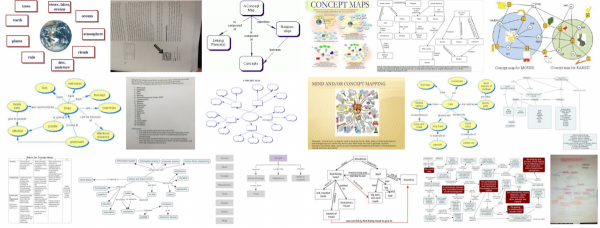Earth science is one of the coolest sciences out there. The Earth and its processes are observable and you usually don't need special equipment to feel it, see it, smell it, hear it, and usually, you wouldn't want to taste it, but you could if you wanted to. The word science itself means "to have knowledge." So Earth Science literally means to have knowledge of the Earth. Earth science is a very broad science. It covers all the Earth's processes including oceans, atmosphere, and space.
The four main parts of Earth Science are Geology, Meteorology, Oceanography, and Astronomy.
- Geology: The study of Earth processes.
- Meteorology: The study of weather.
- Oceanography: The study of oceans.
- Astronomy: the study of space.
Your assignment today is to create a concept map of the four major topics covered in Earth Science. A concept map is used to help people brainstorm and organize ideas. You have probably used or seen concept maps before. Below is a screenshot that shows many different styles of concept maps.
Below is a list of words that fit into one of the four Earth Science topics. Create a Google Drawing and design a concept map that organizes the following words: Earth Science, geology, waves, currents, astronomy, oceanography, stars, volcanoes, planets, meteorology, fossils, weather, climate, rocks, galaxies, thunderstorms, tides, tsunamis, lightning, comets, minerals, asteroids, tornadoes, hurricanes, and earthquakes. Use the rubric below to help you do well on this assignment.
If you are an SUSD5, Holbrook HS, or Heber HS student you may make a copy of this rubric in your Google Docs.
If you are a teacher and would like to purchase the Earth Science concept map rubric $0.60 cents.










